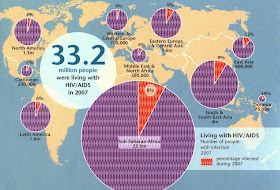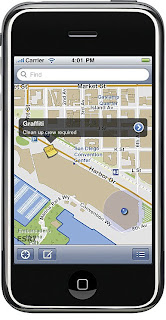 World Aids Day: Map of HIV/AIDS from Ball State University Libraries
World Aids Day: Map of HIV/AIDS from Ball State University LibrariesSince 1987, December 1 has marked World Aids Day, an international movement commemorated each year to raise awareness of HIV/AIDS issues, prevention, and the promotion of a search for a cure.
The map shown above (click to view larger) depicts the millions of people around the world living with HIV/AIDS as of 2007. The map is from The Penguin State of the World Atlas by Dan Smith, which is available from the Ball State University Libraries’ GIS Research and Map Collection (GRMC) and the Atlas Collection on the second floor of Bracken Library.
The circle graphs depict the percentages of the population and the millions of people in each region of the world who are infected with HIV/AIDS. A quick glance shows the massive crisis affecting Sub-Saharan Africa with 22.5 million people infected with the disease, while 19% of the population of Oceania is infected.
This atlas features numerous maps depicting social issues. These maps can be used for papers and presentations for research and learning.
Atlases circulate for 28 days or longer. For information about how to cite maps, please visit the GRMC Web page or contact Melissa Gentry at 765-285-1097.












































